The Best Natural and Organic Composting Methods
In this super-actionable article with the real experience we highlight 8 organic composting methods, here are the 5 best:
Cold Composting
Vermicomposting
Bokashi Composting
Tumbler Composting
Pit Composting


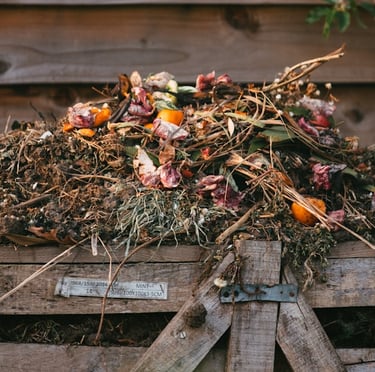





1. Hot Composting
Hot composting is an efficient method that decomposes organic materials quickly through high temperatures. For this method, you first need to create a compost pile with the right balance of green (nitrogen-rich) and brown (carbon-rich) materials.
We experienced that maintaining a compost pile temperature between 55-65°C (130-150°F) accelerates the breakdown of materials. But we also saw that regularly turning the pile to introduce oxygen and moisture is also important for keeping the composting process active.
This method produces finished compost in as little as a few weeks and is ideal if you want quick results.
2. Cold Composting
Cold composting is a slower process that involves piling up organic waste and letting it decompose naturally over time.
This very common method requires minimal maintenance, as you simply add organic materials such as kitchen scraps and garden waste to the pile no matter whether you are composting tall garden plants, drought tolerant plants or just organic waster.
After doing this on our own composting site, we saw that it takes about a year for the compost to be fully ready, that's a lot, right?
Expert Tip: While cold composting is less labor-intensive, it is essential that the pile remains moist and occasionally turned to promote aeration and faster decomposition.

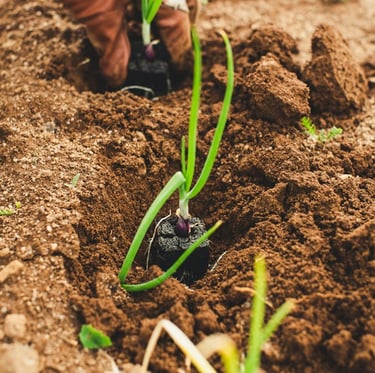
3. Vermicomposting
Vermicomposting uses worms, typically red wigglers, to decompose organic waste. This organic composting method results in nutrient-rich worm castings, which are excellent for enriching your soil, based on our experiments with this method.
We found that keeping the worm bin moist and at room temperature (15-25°C / 59-77°F) is best. The worms consume kitchen scraps and other organic materials, breaking them down into fine compost. Vermicomposting is particularly suitable for small spaces and urban gardening. Still, the method has a bunch more composting benefits and disadvantages.
4. Bokashi Composting
Bokashi composting is an anaerobic natural composting method that ferments organic waste using beneficial microbes. To do it you need to add food scraps to a special bokashi bin and sprinkling bokashi bran, which contains the microbes, over the waste.
We experienced that this method effectively reduces waste volume and odors, transforming food scraps into compost in about two weeks. Bokashi composting is highly efficient for processing kitchen waste, including meat and dairy products, which are not suitable for traditional composting methods.
5. Trench Composting
This method requires digging a trench, filling it with kitchen scraps and garden waste, and covering it with soil.
After several experiments, we saw that this method enriches the soil and improves its structure over time.
Trench composting is ideal for plants and shrubs in garden beds and can be done throughout the growing season as organic fertilizing.
6. Compost Tea
Compost tea is a powerful, nutrient-rich liquid fertilizer that boosts plant health and soil quality without bins or fences for composting. To make compost tea, fill a large container with water and steep a bag of finished compost in it for 24-48 hours.
Aerate the mixture by stirring it occasionally or using an aquarium pump. Strain the liquid to remove solids, and use the resulting tea to water your plants or as a foliar spray.
This natural fertilizer enhances soil microbiology, promotes vigorous growth, and improves plant resistance to diseases but it can't directly suppress diseases.

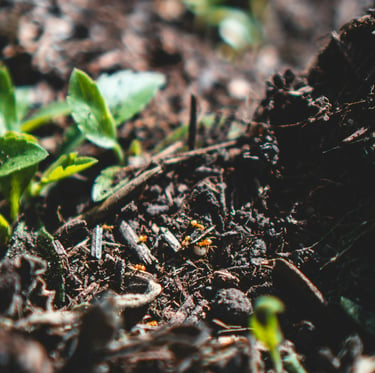



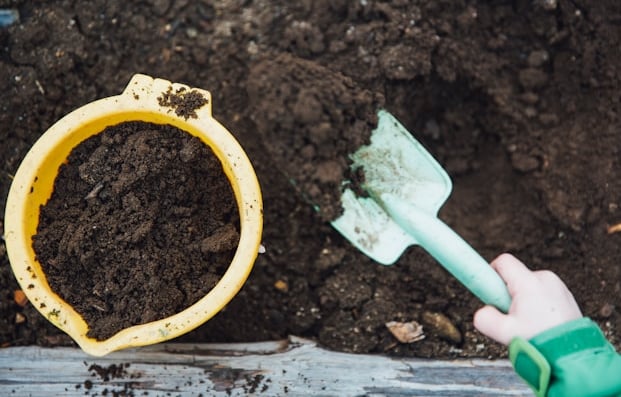



7. Tumbler Composting
This method is particularly user-friendly, as the tumblers are designed to make turning the compost easy.
We discovered that it speeds up the composting process and requires less physical effort. Tumbler composters are enclosed, which helps maintain heat and moisture levels, resulting in faster decomposition. This method is ideal for gardeners with limited space or those who prefer a more hands-off approach to composting.
8. Pit Composting
To do pit composting involves digging a pit and filling it with organic waste. This method is particularly useful for handling large volumes of waste and is less visible than above-ground compost piles.
After trying this, we saw it produces rich compost in 6-12 months. Pit composting is beneficial for improving soil structure and fertility in specific garden areas, making it an excellent choice for perennial beds and tree planting sites.
9. Leaf Mold Composting
Leaf mold composting specifically uses fallen leaves to create a rich soil amendment. To conduct it pile up leaves and let them decompose over time. We experienced that letting leaves decompose over 1-2 years results in a high-quality, humus-like material that is excellent for improving soil texture and water retention. Leaf mold is particularly beneficial for mulching and as an addition to potting mixes, providing a slow-release source of nutrients.
10. Grasscycling
Grasscycling involves leaving grass clippings on the lawn after mowing. This method naturally returns nutrients to the soil, promoting a healthier lawn without additional effort.
We saw that this method is straightforward and sustainable, as it reduces the need for synthetic fertilizers and helps maintain soil moisture.
Grasscycling is an easy way to recycle lawn waste and improve turf health, making it a practical choice for any lawn care regimen.
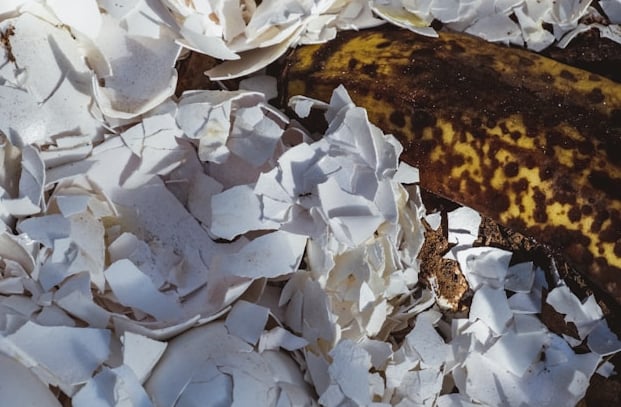





Tips for Composting
Chop Materials
Cut larger items and tall plants into smaller pieces to increase the surface area for microbes to work on, speeding up the composting process. After implementing this extra technique we saw that smaller pieces decompose more quickly and evenly. This is particularly important for tough or woody materials.
Layering
Alternate layers of green and brown materials to maintain a balanced compost pile. Start with a layer of coarse materials like straw or small branches to create a good base and improve air circulation.
Then add layers of greens and browns, making sure to cover kitchen scraps with brown materials to minimize odors and deter pests.
Avoid Problematic Materials
Do not add meat, dairy products, fats, oils, pet waste, or diseased plants to your compost pile (see more below), as these can attract pests and create odors.
The materials can also slow down the composting process and may introduce harmful pathogens to your compost.
Use a Bin
For urban or small-space gardening, use a compost bin or tumbler to contain the composting process and make it more manageable.
Compost bins help keep the compost pile neat, reduce odor, and prevent pests from accessing the compost. Tumblers make it easier to turn the compost, ensuring it gets enough oxygen and decomposes evenly.
Monitor Temperature
For hot composting, use a compost thermometer to monitor the pile's temperature and ensure it stays within the ideal range for efficient decomposition.
Temperatures between 55-65°C (130-150°F) are optimal for killing weeds naturally and pathogens while speeding up the composting process. If the temperature drops, it may indicate that the pile needs more green materials, water, or turning.
What and Why Not to Put in Your Compost
What to Include
vegetable scraps
fruit peels
coffee grounds
tea bags
eggshells
grass clippings
leaves
straw
cardboard
shredded newspaper
What to Avoid
meat
dairy products
fats
oils
pet waste
diseased plants
any materials treated with pesticides or herbicides
The 3 Most Important Best Practices for Composting
Balance of Greens and Browns
Ensure a proper balance of nitrogen-rich green materials (like kitchen scraps, grass clippings, and coffee grounds) and carbon-rich brown materials (such as dried leaves, straw, and cardboard).
This balance helps maintain the right conditions for decomposition. Greens provide the nitrogen needed for microbial growth, while browns supply the carbon that fuels the composting process.
Regular Turning
Turn your compost pile regularly to introduce oxygen, which is crucial for aerobic decomposition.
We clearly saw that this composting best practice helps to mix the materials, break down clumps, and provide the necessary airflow to keep the microbes working efficiently.
It not only speeds up decomposition but also helps to prevent unpleasant odors that can occur when the pile becomes anaerobic. Aim to turn the pile every one to two weeks.
Maintain Great Moisture Levels
Keep the compost pile as damp as a wrung-out sponge. The right moisture level for composting is essential for microbial activity. If the pile is too dry, the decomposition process will slow down significantly.
If it is too wet, it can become anaerobic, leading to unpleasant odors and a slimy texture. Regularly check the moisture level and add water if it feels too dry, or add more brown materials if it feels too wet.
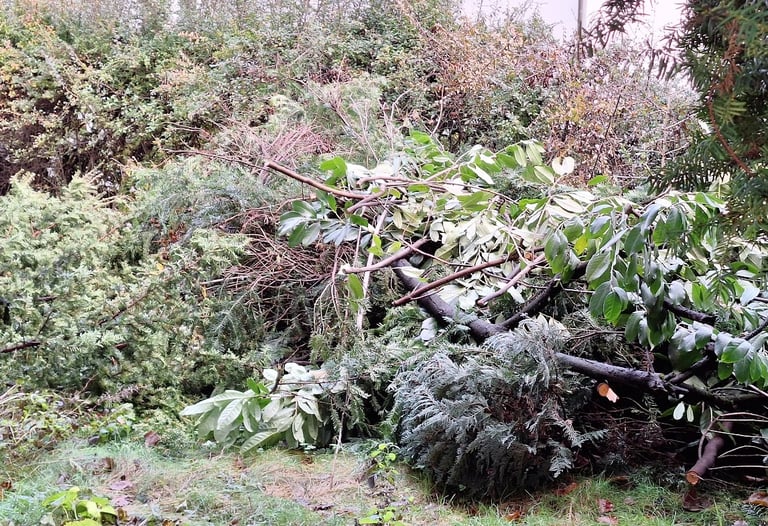





FAQ
How do you compost organically?
Organic composting involves using natural materials for compost such as kitchen scraps, garden waste, and manure without synthetic additives.
After we made compost a bunch of times we saw that maintaining a balance of green (nitrogen-rich) and brown (carbon-rich) materials makes the decomposition more efficient.
What is the best compost for organic gardening?
The best compost for organic gardening is one that is rich in nutrients, well-balanced in nitrogen and carbon, and free of chemicals. Vermicompost and hot compost are particularly beneficial due to their high nutrient content and microbial activity.
What are the three methods of composting?
The three primary methods of composting are hot composting, cold composting, and vermicomposting. Each method has its advantages depending on your needs and resources.
What is the simplest composting method?
The simplest composting method is cold composting. This method involves piling up organic waste and letting it decompose naturally over time with minimal maintenance. You add kitchen scraps and garden waste to the pile, while keeping it moist and occasionally turn it.
What is the most effective composting method?
Hot composting is the most effective composting method. It involves creating a compost pile with the right balance of green and brown materials and maintaining a high temperature (55-65°C / 130-150°F) to accelerate the decomposition process.
Expert Tip: It is best if you also need to turn the pile to introduce oxygen and moisture to speed up the process. This organic composting method can produce finished compost in as little as a few weeks.
Sources
Nature and Sustainability uses only high-quality sources, including peer-reviewed studies to support the facts we describe in our articles. Please read our editorial policy to learn more about how we keep our content accurate, reliable, and trustworthy.
Facts on all the organic composting methods: Cold composting | (oregonstate.edu), Hot Composting (thespruce.com), Hot Composting vs. Cold Composting - FineGardening, Vermicomposting | (ncsu.edu), Bokashi Composting (planetnatural.com), Trench Composting | Gardening Know How, Grasscycling | Planet Natural
Decomposition in natural composting: https://www.usu.edu/herbarium/education/fun-facts...
Nitrogen-rich materials for composting: Nitrogen-Rich Materials for Your Compost Pile
Materials for composting: Here’s What Not to Put in Compost (bhg.com), What Not To Compost (sustainablejungle.com)
Moisture levels for compost: Optimum moisture levels for biodegradation - PubMed (nih.gov)
General information on composting: Making and Using Compost | MU Extension, Composting 101 | University of Colorado Boulder, Create a Compost Pile – Bonnie Plants, Use a Compost Tumbler (bhg.com)
Share this article:




Article By:
Calin is in the garden industry for 5 years now and knows a lot about gardening and plants. He is the owner of this website and responsible for most of the content.

